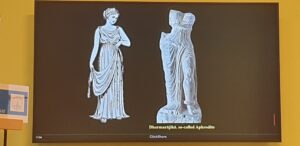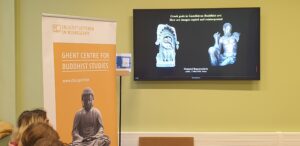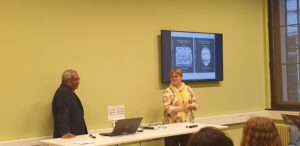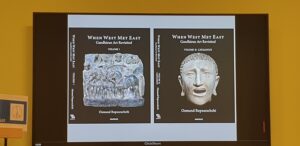As part of the Permatent Training in Buddhist Studies lecture series, Prof. Osmund Bopeararchchi (University of Lens) delivered a talk titled “Greek gods in Gandhāran Buddhist art: How are images copied and reinterpreted” on Tuesday, 22 April 2025, at the Faculty Library of Arts and Philosophy, Ghent University.
Prof. Bopearachchi opened his lecture by outlining the historical context of the Gandhāra region, a unique cultural crossroads shaped by the Greek presence north of the Hindu Kush mountains following Alexander the Great’s conquests. He then explored how Greek motifs were incorporated into Gandhāran Buddhist art, demonstrating the influence through elements such as realistic facial expressions, Corinthian columns, Hellenistic furniture, clothing, and ornamentation. These were contrasted with artistic representations found in production centers south of the Hindu Kush, highlighting regional stylistic differences.
The lecture then turned to the presence of Greek deities in Gandhāran art. Among them was Tyche (Fortuna), the goddess of success, who often appeared as the genius loci—the protective spirit of a city. Another significant example was Heracles, who was reinterpreted as Vajrapāṇi, the protector of the Buddha, typically shown wielding a thunderbolt in place of his traditional club.
The talk concluded with a discussion on the Dionysian cult of viticulture and wine consumption. Prof. Bopearachchi shared his recent research identifying scenes of joyful wine-drinkers not merely as bacchic revelry, but as representations of gandharvas—celestial musicians and dancers from the demigod realm in Buddhist cosmology.







